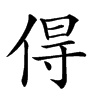Should they have a record of how, when and where Viets replaced Tais in Northern Vietnam if Viets weren't there in the first place?
I doubt that the Chinese totally ignored what happened in Giao Chi
. Such a damn large population who took over the area should have prompted more detailed descriptions of who they were, where they were from, and their movements
or some kinds of recorded history involving them in Khmer, Champa, Tai and Chinese history
"Kinh" means city or town, a word to distinguish them from the people who live in the mountains as "Thượng". If it had been Tai who interacted with Chinese in the Tonkin area many centuries before Viets "took over", remember after Han Chinese conquered the area, they attempted to destroy the local culture and "Han-ized" the area, then the Tai should have been already strongly influenced by Sino culture as the result, but they weren't! and Viets wouldn't have absorbed that much Han-Viet vocabulary in such a short time.
http://sino-platonic.org/complete/spp017_yue.pdf
"However, as argued above,
raised dwellings appear to be a response to specific
environmental conditions and are constructed by many different ethnic groups
living in southwestern China, Southeast Asia, and Polynesia today. As a trait, they
serve better to distinguish northern Han Chinese houses from Southeast Asian. It
is well known that in traditional Southeast Asian villages today, Chinese merchants
usually live in ground level houses, often made of poured concrete, whereas the
local people prefer raised houses constructed from wood and bamboo."
Another cultural trait frequently cited as diagnostic of both Yue and Tai culture is
skill in metallurgy, especially illustrated in the production of bronze, mushroom-
shaped drums.
Ethnographically, however, these drums are associated today with
not only Tai speakers, but Miao (Miao-Yao, a branch of Sino-Tibetan), Karens (a
branch of Sino-Tibetan) and others. The distribution of these drums is very wide -
they are found in Yunnan, Guizhou, Guangxi, Guangdong, Vietnam, northern
Burma, Thailand, Laos, Cambodia and even out into the Malayo-Ponesian
archipelago (Smith and Watson 1979, Appendix: 495-507).
Historically, the drums
span the mid-first millennium B.C. up to the 14th century A.D. As a marker of Tai
ethnicity, they are, at best, problematic.
Finally, Jiang and Li suggest characteristics such as wet rice agriculture and a
highly developed water technology (a common saying among Chinese is that Tai
love water and build their villages along river banks).
This statement is so
generalized as to be practically meaningless.
In the end, when we review the nature of the suggested Tai cultural
characteristics which are supposed to link them with the Hundred Yue, it would
appear that they serve more as markers distinguishing Southeast Asian cultures
from Han Chinese, and more specifically,
lowland Southeast Asian cultures --
cultures which would include not only Tai speaking groups, but Mon and
Austronesian speakers as well."













































